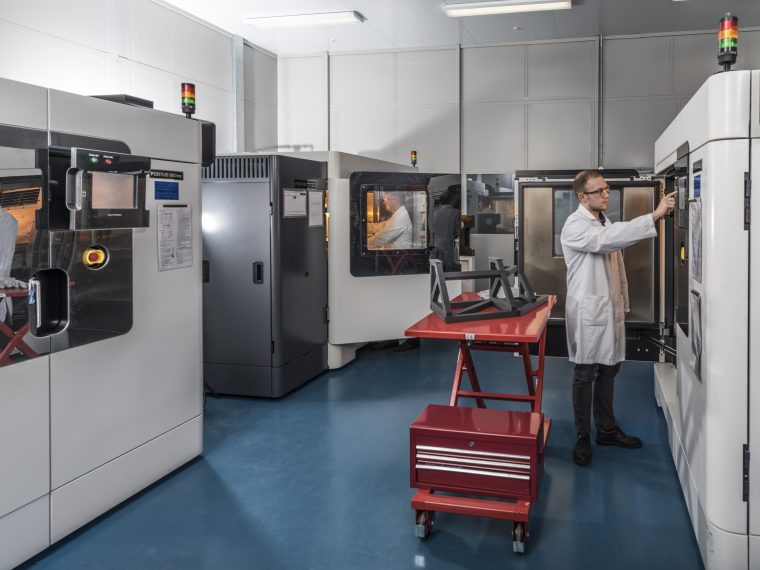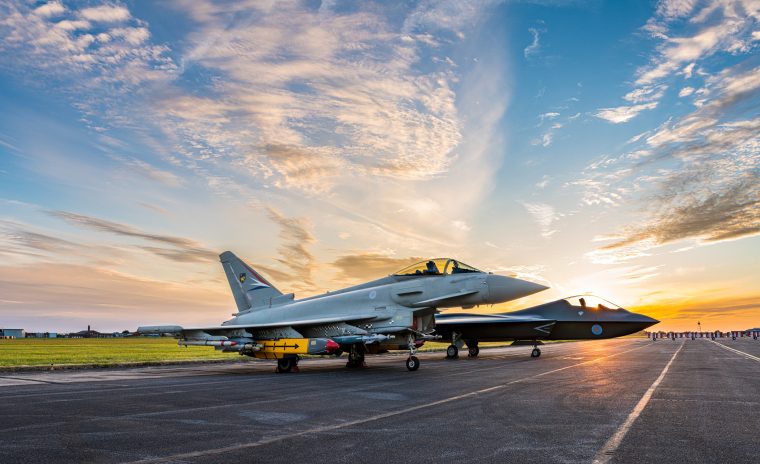Leading 3D printer manufacturer Stratasys has reported a 9 percent quarterly recovery in its consolidated revenue between Q2 and Q3 2020.
During Q3 2020, the company generated revenue of $127.9 million, constituting a 19 percent decline on the $157.5 million reported in Q3 2019, but a 9 percent sequential improvement on the 28 percent drop seen in Q2 2020.
Due to the impact of COVID-19 on Stratasys’ customer demand earlier this year, it was forced into a “strategic resizing,” that saw the company cut its workforce by 10 percent. However, the firm’s Q3 recovery has now validated this strategy in the eyes of its investors, and its shares have risen from $14.48 to $15.58 in the short time since the results’ release.
In an earnings call with investors, Yoav Zeif, CEO of Stratasys, was upbeat about the company’s chances of returning to growth in the medium term. “We were pleased to see sequential improvements in both our top and bottom lines for this quarter, reflecting the beginning of a potential recovery from the pandemic,” said Zeif.
“We believe that our innovations of today will drive competitive production advantages for the factories of tomorrow, resulting in growth and value creation for our customers and shareholders,” he added.
“We are laser-focused on leading the polymer 3D printing market by delivering the most innovative, next-gen technologies.”

Stratasys’ Q3 2020 financial results
Revenue at Stratasys is reported across two main segments: Products and Services. The firm’s Products division includes income generated by its 3D printers and materials, and accounts for the majority of its revenue. Services, meanwhile, refers to Stratasys’ on-demand manufacturing and consultancy offerings.
Over the course of Q3 2020, Stratasys’ Products generated $83.5 million in revenue, a decrease of 21 percent on the $106.3 million reported in Q3 2019. When tallied up across the first nine months of 2020, the firm’s Products yielded $240.5 million in revenue, which is 25 percent less than the $321.7 million reported in the same period of 2019.
In terms of the company’s Services, it generated $44.3 million in revenue during Q3 2020, a decline of 13 percent on the $51.1 million reported in Q3 2019. For the first nine months of 2020, Stratasys’ Systems have now made $137.8 million in revenue, a fall of 10 percent compared to the $154.1 million reported in the first three quarters of 2019.
| Revenue $ | Q3 2019 | Q3 2020 | Variance % | 9M 2019 | 9M 2020 | Variance % |
| Products | 106.3m | 83.5m | -21 | 240.5m | 321.7m | -25 |
| Services | 51.1m | 44.3m | -13 | 154.1m | 137.8m | -10 |
| Total Revenue | 157.5m | 127.9m | -19 | 394.6m | 459.5m | -14 |
Stratasys’ overall revenue performance is largely in line with that of competitors such as 3D Systems, which announced a similar sequential quarterly recovery. Interestingly, 3D Systems also reported a sizable decline in its Products revenue, indicating that industrial clients remain reluctant to invest in new equipment in the current economic climate.
The company also opted to write-off $386.2 million in goodwill impairment charges, related to its FDM and Polyjet businesses during Q3 2020. COVID-19 has caused significant disruption to the share prices of 3D printing companies this year, and several companies have used this as an opportunity to balance their books.
GE for instance, wrote off $877 million in goodwill during Q2 2020 in a move related to the declining value of the acquisitions it made in 2016. Although GE admitted that the write-off had put “pressure on its cash flow assumptions,” Zeif made it clear on the earnings call that this is not the case with Stratasys, and it’s still investing in future growth opportunities.

Aerospace opportunities for Stratasys in Q3
Despite the fact that Stratasys reported a 21 percent revenue decline in its Products segment over Q3 2020, it still earned several large machine orders during the period. The company received its largest ever order for its F900 systems from AM Craft in August, after installing 17 FDM printers for automotive manufacturer General Motors (GM).
Stratasys’ aerospace division showed particular growth during Q3, as BAE Systems installed its fourth F900 system while Boeing qualified its Antero 800NA filament, suggesting further opportunities could be in the pipeline. Although the firm wouldn’t break down the segment’s exact figures, Zeif said that 3D printing was gaining a foothold there due to the technology’s green benefits.
“Aerospace is one of our leading industries because of the advantages of additive manufacturing, in terms of the mechanical properties it’s possible to achieve,” explained Zeif. “Our innovation is paving the way for the technology to be used as a production tool in the industry, and to counter the threat that exists in terms of our environmental footprint.”
In addition to the aerospace contracts that Stratasys fulfilled during Q3, it also reduced its expenditure, in an attempt to enhance its profitability. The company spent $19.5 million on its R&D during Q3 2020, a reduction of 17 percent on the $23.6 million invested in Q3 2019. Overall, including the firm’s general admin costs, it reduced its spending by 19 percent in the same period.
Stratasys’ strategy for Q4 2020
Concluding the earnings call, Zeif said that the company would be continuing on the same strategy outlined in Q2, in that it remained focused on targeting new polymer 3D printing applications. Stratasys has already made the COVID-related cost savings that it needed to, meaning that it can now invest in a “major upgrade” of its Polyjet line line of systems in 2021.
Zeif also identified the firm’s grabcad software as a source of future growth, saying that it provided clients with an “end-to-end 3D printing” solution that would become a key part of industry 4.0 integration. The firm plans to leverage its industry-specific application expertise and existing ecosystem of products, to market the platform and drive future growth during Q4 2020.
In his outlook for the fourth quarter, Zeif also identified the increased spending of its clients in the public sector, as an encouraging sign that its recovery could progress into next year. “We were pleased to see sequential improvements in both our top and bottom lines this quarter, reflecting what we believe is the beginning of our recovery from the pandemic,” said Zeif.
“We were encouraged by the improved sales of hardware and consumables in government, specifically in the aerospace sector as well as healthcare and education,” he added. “This is a positive trend that we expect to continue into the fourth quarter.”
To stay up to date with the latest 3D printing news, don’t forget to subscribe to the 3D Printing Industry newsletter or follow us on Twitter or liking our page on Facebook.
Are you looking for a job in the additive manufacturing industry? Visit 3D Printing Jobs for a selection of roles in the industry.
Featured image shows BAE System’s four F900 machines installed within its ‘Factory of the Future.’ Photo via Stratasys.



